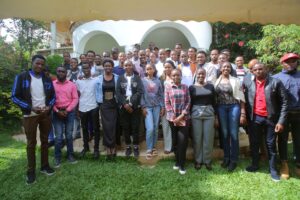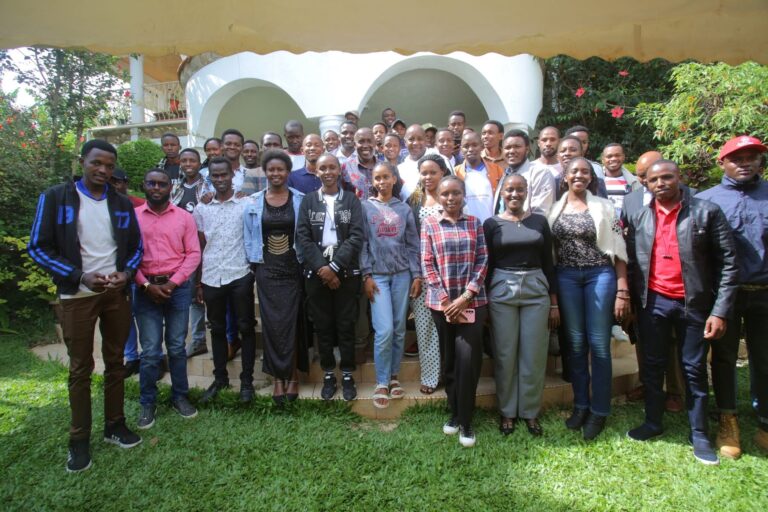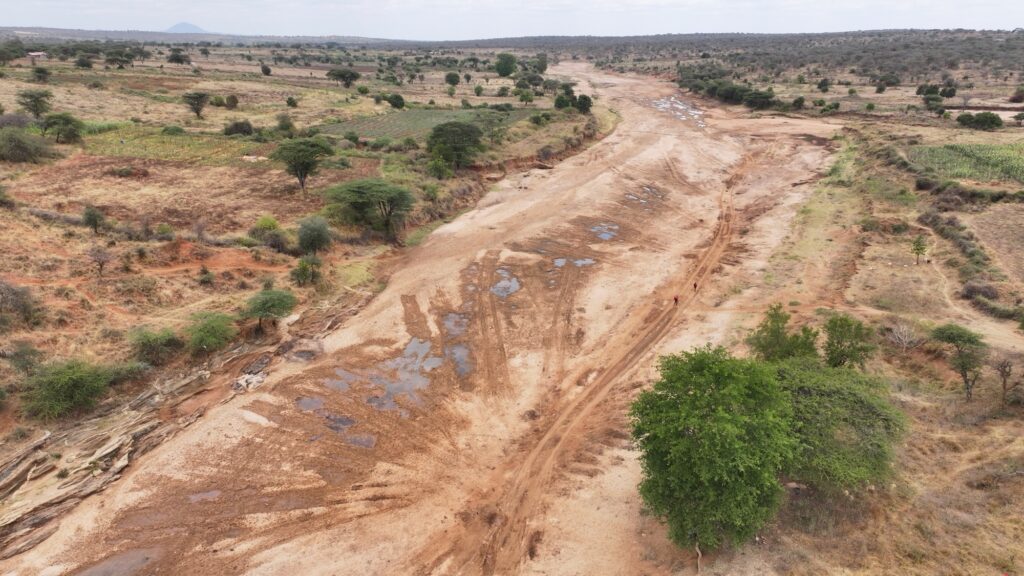
Aerial view of Olkeriai River in Kajiado County — lorry tracks cut across the dry bed, marking the scale of ongoing sand harvesting
By Lucas Kasosi( Paran FM)
At dawn, the bed of the Olkeriai River in Kajiado, looks like a construction site. Young men with spades dig feverishly into the sandy floor. Huge lorries idle nearby, waiting to be filled. To outsiders, it is just another cog in Nairobi’s booming construction supply chain. To locals, it is the slow death of their river.
“This river once flowed freely. We fetched clean water without struggle. Now we dig pits, and even then the water tastes of salt,” laments Leah Peter, a resident of Nairagie Enkare, in Olkeriai. “They sell a lorry in Nairobi for thousands. Here, we are left with 400 shillings, and a dry river.”
Across Kajiado, sand is the new gold. More than 500 trucks rumble out of riverbeds every single day, ferrying millions of shillings’ worth of sand to Nairobi, Athi River and Machakos. But at the source, the wealth translates into dust-choked villages, collapsing riverbanks, and cattle dying of thirst.
Profits for a Few, Losses for the Many
A single truckload of sand from Olkeriai can fetch up to KSh 30,000 in Nairobi’s construction market. Yet at the source, villagers are paid as little as KSh 3,000, often split between entire communities. The disparity is staggering. A 2022 report revealed that transport companies pocket profit margins of up to 900 percent per truck, turning rivers into goldmines for a few while the communities who live by them sink deeper into poverty.
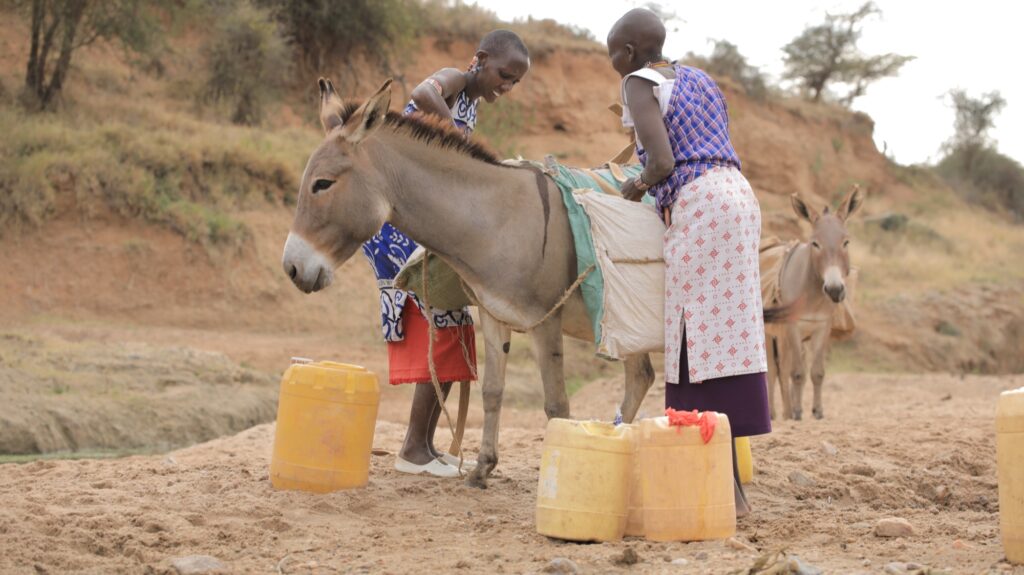
“We sell a lorry for about three thousand shillings, sometimes shared between two villages,” says Sylvia Nkaadu, standing at the scarred riverbed. “If harvesting continues for five more years, this river will dry forever. Already our cattle drink salty water.”
The exploitation is not only financial, it is generational. In Kenyawa division, three in every ten pupils are involved in sand harvesting, according to a 2021 study. This has driven chronic absenteeism and declining school performance, trapping families in a cycle of poverty. A Kenya National Bureau of Statistics (KNBS) survey confirms that child labour in Kajiado is nearly three times the national average, with sand mining as a major driver.
“Our children should be in school, not loading trucks,” Sylvia adds bitterly. Her voice echoes a wider fear, that an entire generation may be lost, digging for survival in rivers that are disappearing beneath their feet.
Caught Between Survival and Collapse
For many in Kajiado, sand harvesting is both a lifeline and a death sentence. The trade pays school fees, puts food on tables, and sustains tens of thousands of families. But it is also the very activity draining rivers dry, killing cattle, and dismantling the ecosystem.
“I am a sand harvester. Through this work we pay school fees for our children,” says John Lampa, supervising loaders at Ole Kaitoriori. Then, almost in the same breath, he admits: “But the sand is nearly finished. Lorries now drive inside the river itself. Without regulation, we will lose both water and sand.”
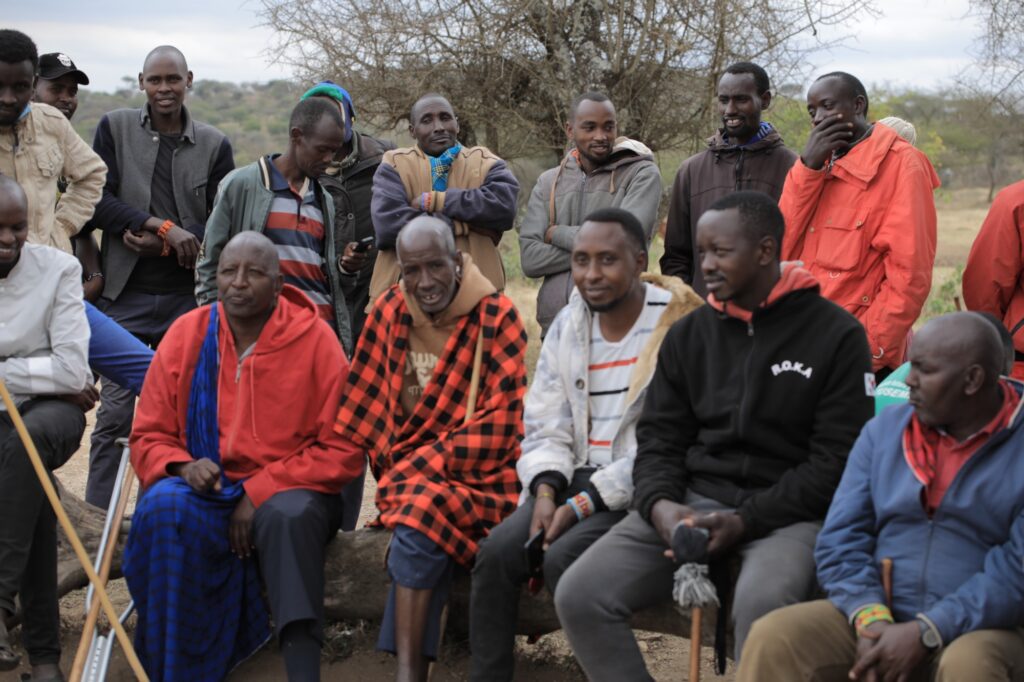
At Ole Kaitoriori Centre, elders and youth gather to voice their fears, and hopes, as sand harvesting drains the Olkeriai River
It is a cruel paradox, Maasai families depend on the same industry that threatens to destroy their future. Over 100,000 people in Kajiado directly or indirectly rely on the sand trade, according to county estimates. Yet the Olkeriai, like many rivers in the county, is collapsing under the weight of unregulated extraction.
The contradiction is tearing communities apart. On one side are families who cannot survive without the daily wages from loading trucks. On the other are elders, pastoralists and women warning that when the river dies, so will the culture and livelihoods that have sustained the Maasai for generations.
Climate Change Turns the Screw
Erratic rainfall is tightening the noose on Kajiado’s fragile rivers. County climate records show rainfall plunged from nearly 80 millimetres in 2020 to just 5 in 2023, one of the lowest levels ever recorded, before rebounding briefly in 2024. At the same time, mean annual temperatures have soared to 38°C, scorching shallow wells, accelerating evaporation, and leaving communities on the edge of thirst.
Sand harvesting is multiplying the damage. A 2024 study by the Catholic University of Eastern Africa found that in Olkeriai, sand extraction had a statistically significant effect on environmental degradation. Over 92 percent of residents reported worsening soil erosion, while 84 percent confirmed groundwater levels had dropped, forcing women and children to dig deeper pits in search of water.
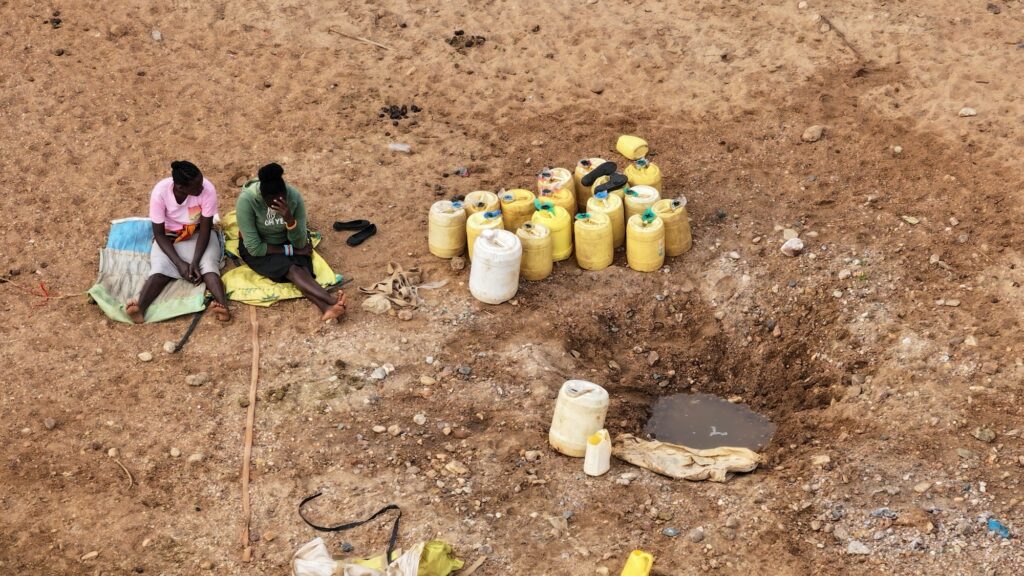
“This is not just an environmental issue, it is a survival issue,” warns Dr. Ntiati, a hydrologist at Kenyatta University. “If rivers like Olkeriai dry completely, Kajiado faces a humanitarian crisis. We will see livestock deaths, food insecurity, and violent conflicts over water within the decade.”
What climate change begins, unregulated sand harvesting completes, draining rivers, emptying wells, and pushing already-vulnerable communities toward collapse.
A Crisis Written in Numbers and in Health
The impact of sand harvesting is etched not just in dry riverbeds but in human bodies and broken livelihoods. Oil leaks from trucks and excavation machinery seep into wells, contaminating drinking water and triggering stomach illnesses among children. In schools near harvesting sites, noise levels have been recorded above the safe threshold of 85 decibels, while dust clouds blanket classrooms, disrupting lessons and fuelling cases of asthma and other respiratory diseases.
The pastoral way of life is under siege. Livestock deaths have surged as cattle are forced to drink saline or contaminated water. For a community where wealth and identity are tied to herds, the loss cuts deeper than economics, it threatens the very fabric of Maasai culture.
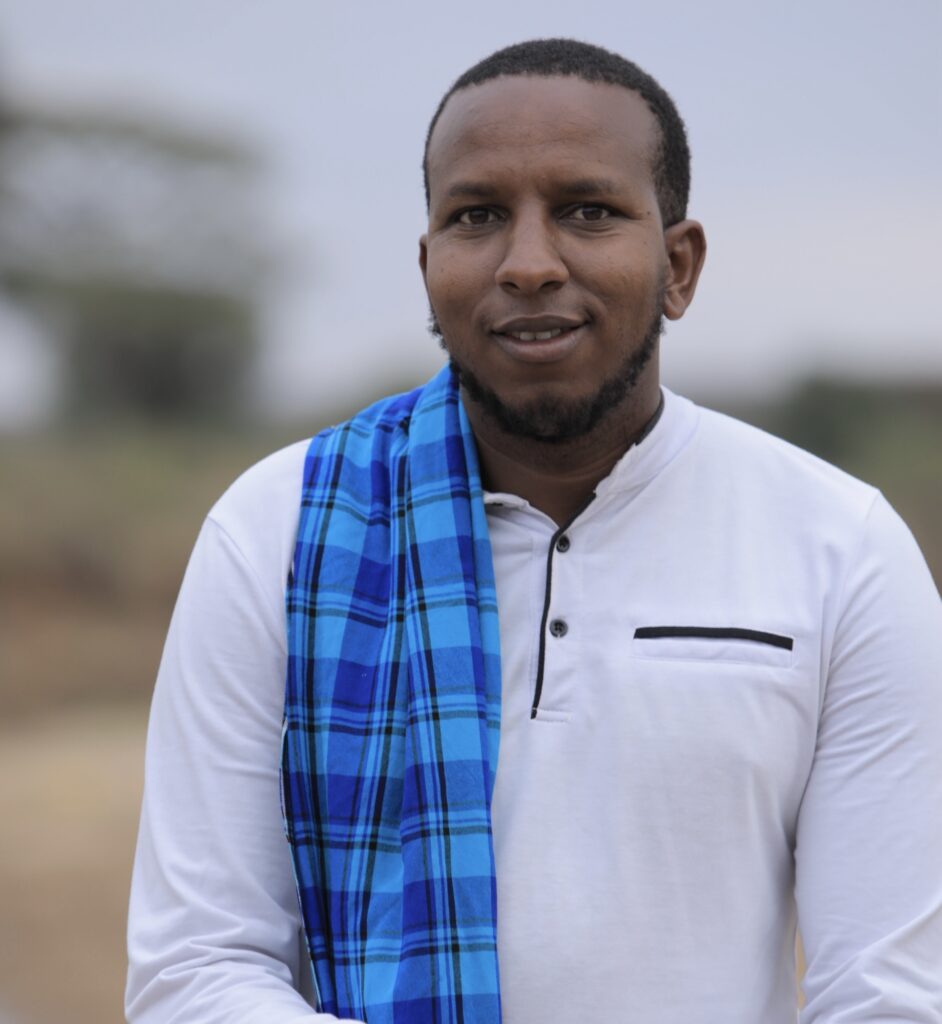
“We are slowly losing both culture and livelihood,” says William Melita, a youth from Olkeriai. His words carry both grief and warning. “If this river had a mouth, it would tell us: if you care for me, I will care for you.”
The statistics reinforce his fears. A 2021 study confirmed that 30 percent of pupils in Kenyawa division are engaged in sand harvesting, fuelling absenteeism and trapping families in cycles of poverty. Respiratory illnesses have risen sharply near excavation zones, while communities report growing cases of stomach disorders linked to water contamination.
This is not only an environmental disaster. It is a public health emergency and a cultural erosion crisis, one that numbers alone cannot capture.
Community Resistance and a Petition for Change
Not everyone is resigned to Olkeriai’s slow death. Local youth leader Gideon Toimasi has become a rallying voice, initiating a petition to the Kajiado County Assembly demanding stricter regulation of sand harvesting and protection of river ecosystems.
“This petition is not against livelihoods,” Toimasi explains. “It is about survival. We are asking our leaders to act before the river vanishes completely. The profits go to outsiders, but the pain is left with us, dry wells, dead livestock, children out of school.”
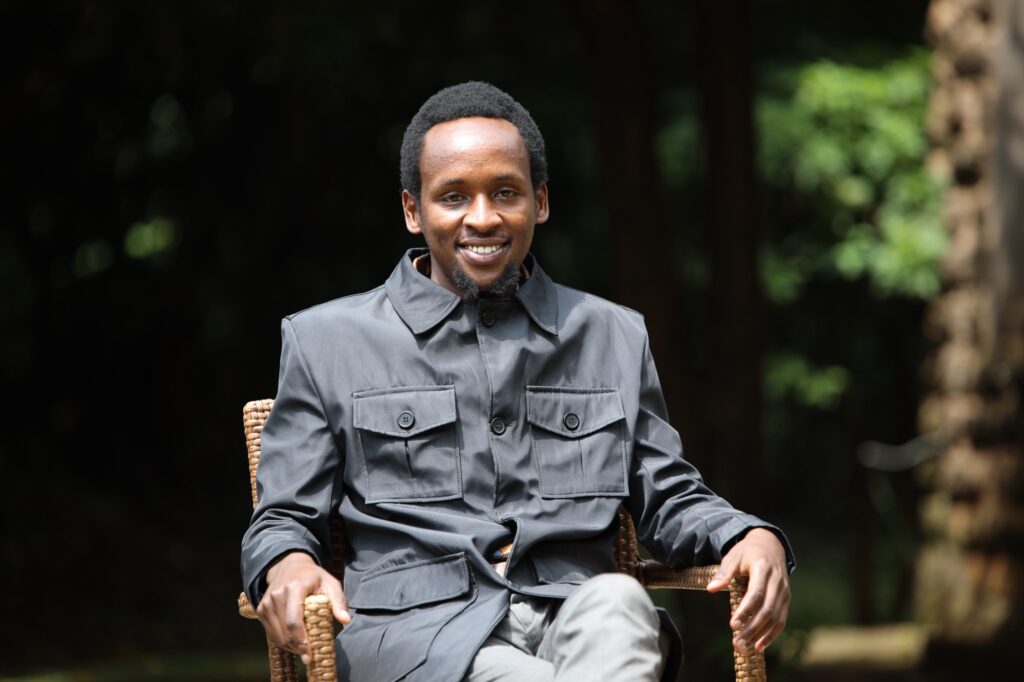
The petition, tabled before the Assembly earlier this year, calls for urgent enforcement of the Kajiado Sand Conservation and Quarrying Management Bill, 2024. It also demands transparency on revenues, insisting that funds collected must return to communities rather than vanish into county coffers or cartels’ pockets.
For many residents, Toimasi’s move has given a voice to frustrations long simmering in silence. “The community has spoken,” says an elder from Ole Kaitoriori. “Now it is the turn of MCAs to show whether they stand with their people or with the lorries.”
The Law on Paper, The Gap on the Ground
The scale of harvesting is not in doubt. In the 2023/2024 financial year, Kajiado projected one hundred and twenty-six million shillings from sand and quarrying fees. But insiders admit that less than half was collected, the rest lost to cartels, cash deals and political interference.
In February 2024, the county gazetted the Kajiado County Sand Conservation and Quarrying Management Bill, a landmark law meant to regulate sand harvesting. The bill is now at its second reading in the County Assembly, a critical stage that will decide whether it becomes enforceable law or another shelved document.
On paper, it is the strongest framework the county has ever had. It proposes licensing, safe harvesting rules, rehabilitation plans and penalties of up to four million shillings or four years in jail. It restricts extraction to daylight hours, requires protective gear for workers, and directs that thirty percent of all revenues should go into a conservation fund for community projects.
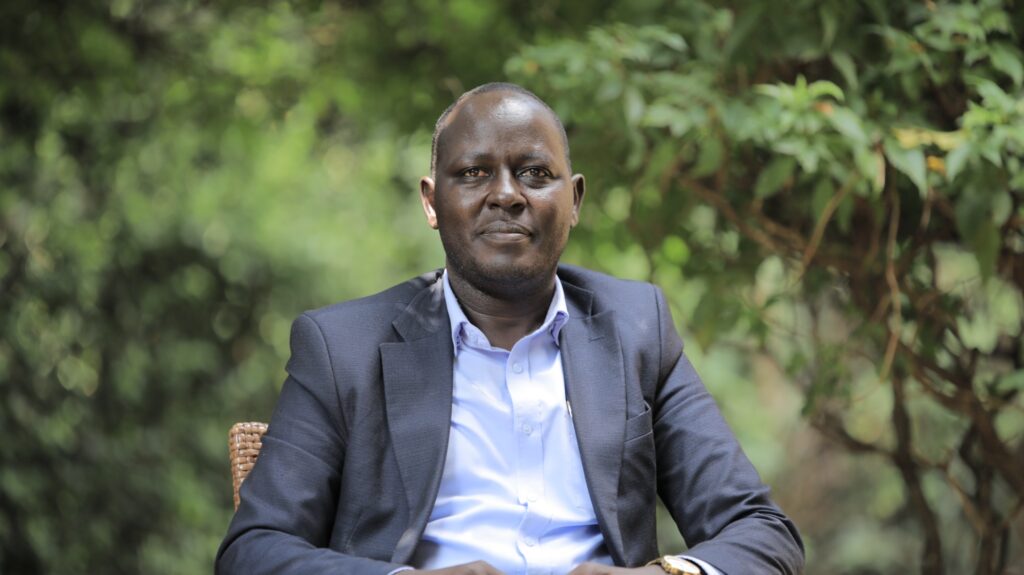
But implementation, if the bill passes, will be the real test. “Business interests are manipulating communities and resisting regulation,” admits George Rianto Kimiti, the County Director of Natural Resources. Brokers, known locally as “batteries”, dominate the trade, bribing officials and bankrolling politicians. Enforcement officers fear attacks, while leaders fear losing votes.
Lessons from Makueni and Kitui
Across the border in Makueni County, a very different story has unfolded. Nine years ago, the county took a bold step by enacting its own Sand Conservation and Utilisation Act. The law designated official harvesting sites, banned lorries from entering riverbeds, and established cooperative societies to manage the trade. Revenues were redirected into community projects, while sand dams were built to trap sediments, restore riverbeds, and recharge groundwater. The results are visible: partial recovery of rivers once on the brink of collapse, reduced conflict between sand harvesters and farmers, and millions of shillings channelled back into local communities.
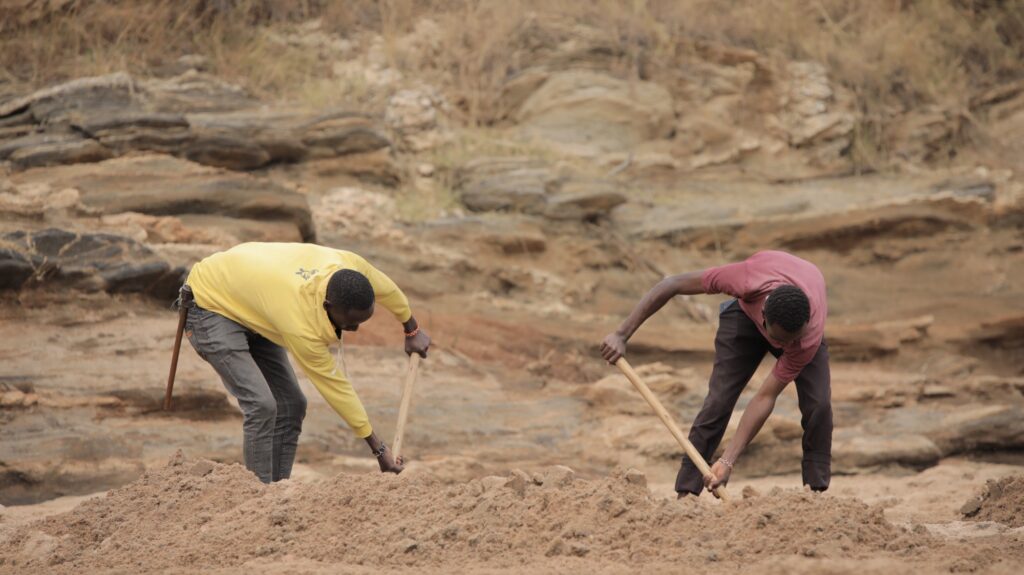
Sand harvesters scoop sand from the Olkeriai riverbed
In Kitui County, leaders followed suit in 2023, passing a law that banned trucks from riverbeds and introduced fines of up to KSh 200,000 and jail terms of two years for illegal operators. The law also created aggregation yards and cooperatives, cutting off cartels and ensuring that only licensed Saccos could trade sand. Environmentalists report early signs of riverbank stabilization and a reduction in violent confrontations that once plagued sand hotspots.
Experts argue that Kajiado does not need to reinvent the wheel. The models exist next door, proof that sand harvesting can be regulated, rivers can be rehabilitated, and communities can benefit without losing their lifeline. What is missing is not knowledge, but political courage.
The Human Cost of Delay
For now, Olkeriai’s bed lies bare. Women rise before sunrise to dig for water. Children are pulled into sand pits instead of classrooms. Roads crumble under overloaded lorries. Pastoralists drive cattle further each season in search of water. And the county continues to count its losses, not just in shillings, but in dignity and in life itself.
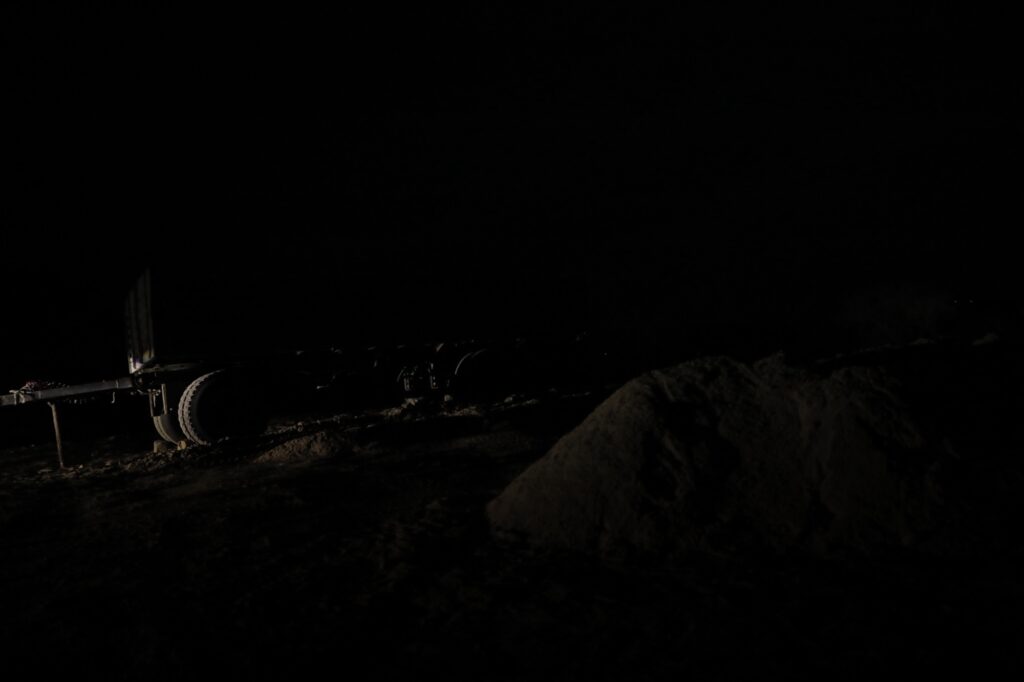
At night, sand trailers sit heavy, waiting to be hauled away by lorries
The evidence is overwhelming. The bill is before them. Communities are crying out. What remains is courage.
Kajiado’s Members of County Assembly now stand at a historic crossroads. Their second reading of the Sand Conservation and Quarrying Management Bill, 2024 is not a routine legislative duty, it is a vote on whether rivers will live or die, whether children will study or dig sand, whether pastoralists will herd cattle or watch them collapse at dry riverbeds.
If the MCAs cave to cartels and delay or weaken this bill, they will go down in history as the leaders who sold Olkeriai for truckloads of profit. If they pass it, enforce it, and stand firm, they will be remembered as the assembly that saved Kajiado’s rivers, livelihoods and future.
The people of Olkeriai, and indeed all of Kajiado, are watching. The question is no longer whether the law exists, it does. The question is whether the MCAs will choose the people over the cartels.
Olkeriai’s fate, and that of countless other rivers, lies in their hands.
For feedback, contact us at info@paran.co.ke


